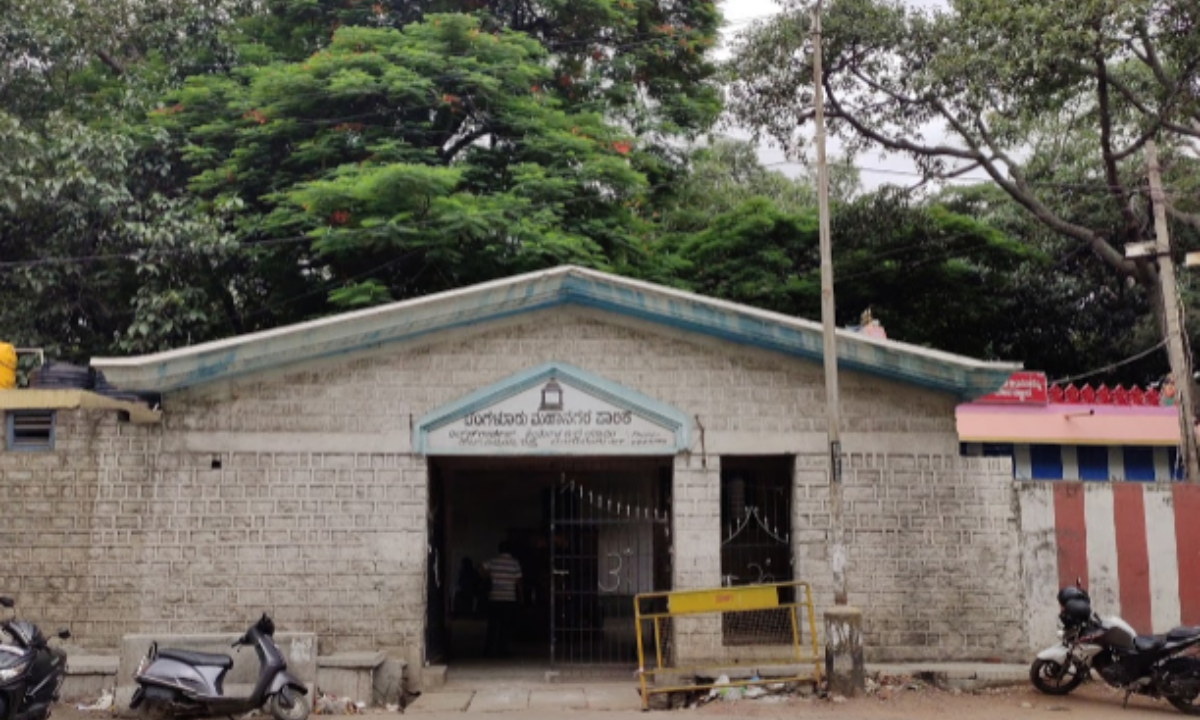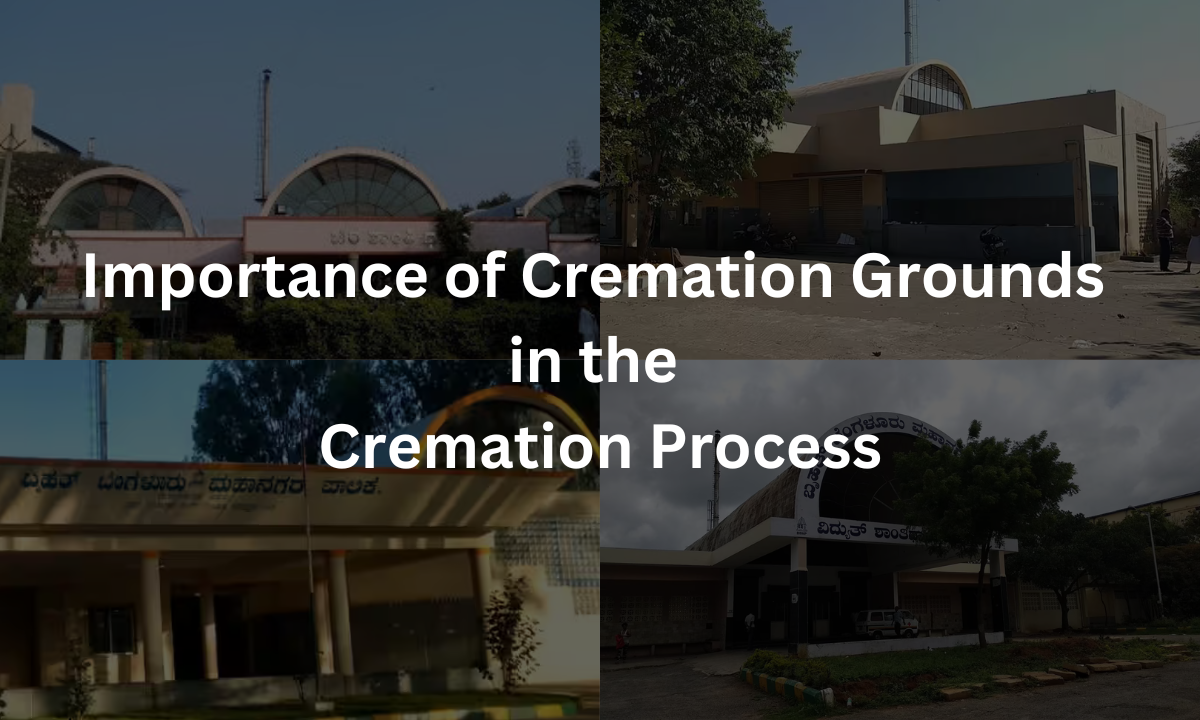Cremation is a common practice throughout numerous communities with diverse religious traditions. Death lets family members tackle the complicated responsibility of performing their last goodbyes. Cultural traditions that rely on cremation have designated cremation areas that fulfill dual functions because they provide logistical space for ritual fire while serving as spaces for mourners to find inner peace during grief.
Cremation grounds exist beyond their functional purpose to provide deceased families with closure and peace while holding clean or pure meaning for the departed. People access cremation grounds as holy sites to both perform final funeral customs and honour deceased loved ones.
This article examines cremation grounds as integral elements during cremation by tracing how they affect mourners alongside their function in upholding spiritual practices.
The Role of Cremation Grounds in the Cremation Process

Final death rites require adequate facilities that cremation grounds serve to provide appropriate space for them in the cremation process. Site layouts for cremation maintain endless dignity through ordered spaces reflecting the sacredness and profound nature of fire burial. The rituals essential to a dignified farewell after death are made possible through cremation grounds which serve grieving families both spiritually and honourably.
According to Hindu tradition the essential funeral rite known as “Antyesthi” requires cremation to happen which needs cremation grounds for its execution. Religious grounds exist near water sources because Hindu believers believe rivers and lakes help cleanse the spirit while facilitating its passage to spirit realms. In religions and other cultures that perform cremation ceremonies, a dedicated space serves to properly conduct traditions with correct dignity and seriousness.
Sacred Space for Rituals and Final Goodbyes
The cremation process combines body burning with comprehensive rituals that show great diversity among different cultural traditions. Places built for cremation serve crucial functions because they provide dedicated physical spaces for honouring rites of passage through death.
In Buddhism, the burial site for cremation serves primarily as a place for spiritual reflection towards death and mortality. These grounds provide both a peaceful atmosphere and support grieving families on their journey through mourning. The Hindu customs of prayer offerings and fire lighting the funeral pyre coupled with ash scattering require the funeral ground as the proper venue to function spiritually.
A Place to Preserve Cultural Heritage
The primary function of cremation grounds is to perpetuate cultural as well as religious traditions. Throughout history, cremation sites existed across multiple centuries because their architectural designs make them important cultural symbols. Sacred sites create relationships through architectural forms that balance spiritual needs with practical death disposal systems.
Every culture has its unique way of saying goodbye to the departed and interpreting what happens after death. Cremation grounds serve as a bridge between these beliefs and practices, giving people a sense of connection to their ancestry.
Emotional and Psychological Comfort for Families
Saying goodbye to someone dear creates devastating emotional experiences accompanied by vulnerable feelings. Cremation grounds provide families with both grieving support and quiet contemplation space after their loss.
During their vulnerable grief stages, visitors find emotional support at managed cremation sites positioned inside peaceful natural areas. A chaotic environment would create unnecessary distress while families try to cope with their emotions. Well-organised respectful cremation grounds require investment because these facilities enable families to properly mourn during cremation.
Families who use cremation services view these designated sites as holy locations because they choose to visit these grounds again at any time after final cremation service procedures have concluded. Visits to these sites create emotional bonds while offering space for thoughts and prayers or memory celebrations.
Environmental Considerations of Cremation Grounds
Alertness toward the environmental effects of cremation practices has steadily increased together with modern funeral practice advancements. To address environmental concerns many cremation grounds have included electric cremation systems alongside sustainable material usage in their operations.
Wood-based traditional cremations cause substantial fuel usage and disperse smoke pollutants across the environment. The introduction of environmentally friendly funeral practices at cremation sites enables sustainable pit-stop procedures that maintain traditional funeral customs. Modern families engage in these environmentally beneficial alternatives because they meet religious customs while protecting natural resources throughout this ceremony.
Urban Development and the Challenge of Space
The continuous rise of the urban population creates difficulties for both the establishment and maintenance of cremation facilities across major urban areas. The particular site requirements that insect cremation grounds need to create tension between future development plans and their preservation status.
The increasing cremation challenge required creators to develop advanced smaller facilities that fulfill both cultural and religious needs within one location. Cities implement vertical cremation grounds together with effective land management practices which enable proper space requirements for dignified funerals.
Cremation Grounds in Modern Times: Adapting to Change
A traditional practice of cremation has obtained historic origins but modern cremation facilities adapt to contemporary social demands. Complex technological aspects integrated into contemporary funeral establishments enable both operational maximizations along with cultural religious and spiritual support requirements.
The site focuses on delivering accessible services to different cultural communities. These grounds currently operate as multi-faith cremation complexes which use adaptable rituals alongside ceremonial practices for modern inclusive settings in multicultural environments.
Conclusion
Dependable funeral service providers operate cremation grounds as sites that offer both physical cremation services along with comprehensive spiritual and emotional support required to recognise passed loved ones. Culture-relevant practices use cremation sites as enduring reflection points to guide the living through the standard rituals that sustain their continuing bond with departed family members.
Cremation grounds need substantial attention for preservation in our continuously evolving technological and urbanised world. These sacred spaces serve multiple purposes by providing respect to the deceased and peace to mourners while safeguarding cultural customs for future generations.
As we continue to respect and modernise these grounds, we honor not just the individuals who pass through their gates but also the values, beliefs, and practices that make life—and death—a profound and meaningful journey.
Kaashimukthi is a well-regarded provider of cremation services in Bangalore, offering comprehensive end-of-life solutions and support to families while ensuring that traditional rituals are respectfully upheld.

Madhu is an Entrepreneur, a Mentor, a Writer and an Aspiring Car Race Driver. He is Deeply passionate about leveraging Technology and Human Centred Design to make complex care and End of Life Planning easier. With the ultimate aim of Improving the quality of Life in the Twilight years. Madhu is highly educated and Alumni of IIM-Bangalore, Sikkim Manipal University and Bangalore University besides a Rich Industry Experience in the field of Product Management, Design, Supply chain, Finance, Commercial Management and Funeral Services.

